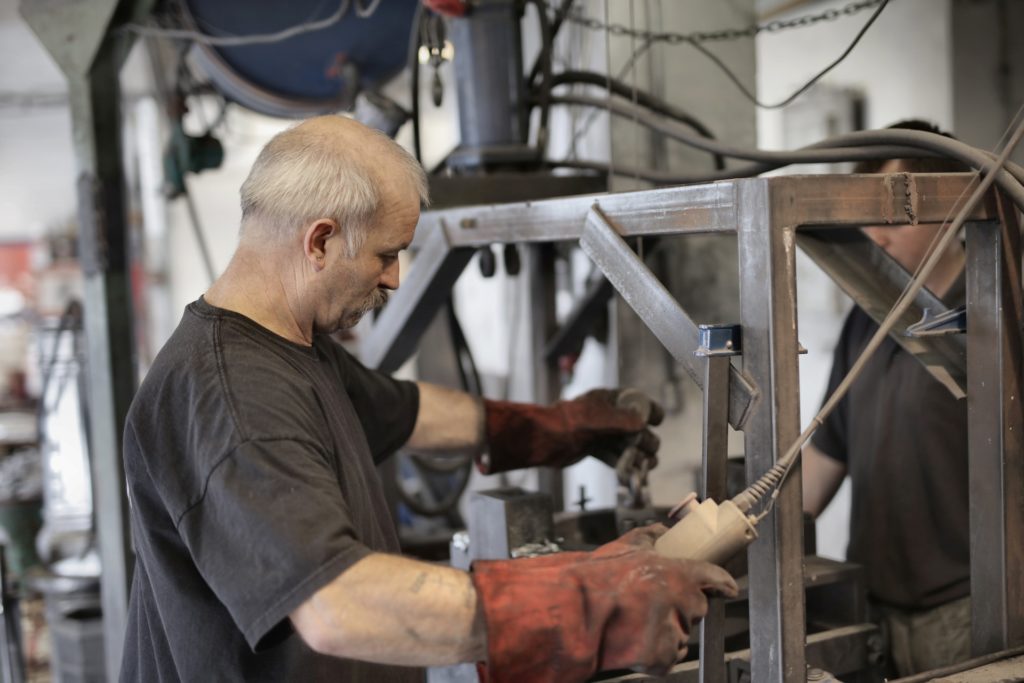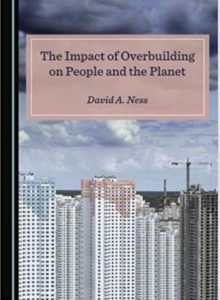
Hedgerows in the Lincolnshire countryside near the small village of Aslackby. Photograph: Steven Booth/Alamy
Not everywhere in the world uses hedges. But Britain has about 500,000 km of hedgerow – despite losing half of them since 1945, as industrial scale farming has taken hold here. One of my very earliest memories is being driven through a patchwork, hedged landscape in the middle south west of England. And it was magic.
Hedges are not just fence-equivalents, worth the investment for that alone. They also store carbon, of course, as linear (if metre high) woodland.
“Hedgerows help slow down the runoff of water, guarding against flooding and soil erosion, and act as barriers to help prevent pesticide and fertiliser pollution getting into water supplies. Studies show they can improve the quality of air by helping trap air pollution.
“They are perhaps the largest semi-natural habitat in Britain, refuges for wild plants and corridors for wildlife to move through, often in barren farmland landscapes.” Paul Simons, the Guardian, 18 Aug 2021
For these reasons, the UK Climate Change Committee recommends planting 40& more hedgerows by 2050.
They are only semi-wild, of course, because they are trees manipulated (‘laid’) by humans, and so require effort, and skill. They are very definitely infrastructure.
And magic.

Thinking about Waves 3 and 4 of Asset Management, this quote from a recent novel struck me:
“It is difficult for anyone born and raised in human infrastructure to truly internalize the fact that your view of the world is backward.
“Even if you fully know that you live in a natural world that existed before you and will continue long after, even if you know that the wilderness is the default state of things, and that nature is not something that only happens in carefully curated enclaves between towns, something that pops up in empty spaces if you ignore them for a while, even if you spend your whole life believing yourself to be deeply in touch with the ebb and flow, the cycle, the ecosystem as it actually is, you will still have trouble picturing an untouched world.
“You will still struggle to understand that human constructs are carved out and overlaid, that these are the places that are the in-between, not the other way around.”
– Becky Chambers, A Psalm for the Wild-Built (Monk & Robot Book 1), 2021


Any maintenance or asset manager knows that the longevity of assets is critically dependent on how well they are maintained. And you don’t have to be a maintenance manager to know that your car needs regular servicing. It is kind of obvious! Yet, when it comes to the important public infrastructure on which we all depend, maintenance is considered dispensable and is the first to be cut in times of financial stringency.
It is all to do with how we account for infrastructure assets. Below is the problem – and how we can overcome it using your asset management plan and condition based depreciation (CBD).
The Problem
It pays to know a little history. When government departments and agencies adopted accrual accounting practices and had to bring infrastructure assets to account for the first time, (In Australia, from 1989) naturally they turned to the private sector, where this had been the practice for many years. And this is where the first problem arose since private sector assets such as plant and machinery are depreciated over their predetermined lifespan until they reach zero or some predetermned salvage value and then they are completely replaced.
Infrastructure assets are different. This does not happen with infrastructure assets which can be kept in service for an indefinite time by piecemeal, if somewhat lumpy, component renewal. What is the age of an asset which may have some components 100 years old and others that were renewed yesterday? What is the life of an asset that can be kept in service as long as you want it to? These are unanswerable questions. They go to the heart of the difference between infrastructure and non-infrastructure assets and require a different accounting approach.
However when infrastructure assets were first brought to account, there was no alternative accounting approach for infrastructure assets, so rather than account for the entire infrastructure system, it was decided to assign each component a definite life and depreciate it as if it were an independent asset. It seemed a practical solution to a difficult problem. But in the process it completely ignored the key characteristic of infrastructure assets which is the interdependence of the components, where the life of a component, and thus the need to renew, is dependent on the other components with which it interacts. In other words, the life of components is indefinite, as is the life of the system as a whole. This does not mean infinite! It just means that you cannot define a life of a component until it reaches the stage of renewal. So depreciation in this case doesn’t work.
You will also notice something else about this approach. The economic life of any asset, as we stated at the beginning, depends on how well it is maintained, and yet maintenance does not feature in this accounting process. This is what makes it so easy for organisations to cut maintenance, since cutting maintenance does not affect the life of the asset, at least not in the accounting system – only in the real world!
The Solution
We need a better system, one that takes equal account of maintenance (minor and major) and renewal, i.e.everything that we need to spend to maintain the functionality of the asset. (In practice ‘maintenance’ and ‘renewal’ are really just different points on a continuum.)
Why do we depreciate assets at all? It is so that we can represent reduction in asset value in any particular period (asset value = its store of future services)
Is there a better way of doing this that recognises the distinct character of infrastructure assets? There is! What better way can there be of valuing the using up of asset services than the cost of making it good again? This is what is called Condition Based Depreciation (CBD). And it is available to any organisation that has a sound, and audited, AM plan as a costless spinoff. Put simply, the condition assessment of your assets that tells you what you need to spend over the planning period to maintain service function and that is in your AM Plan. It covers maintenance, minor and major and renewal and is the cost of making good the consumption of the asset over that period. You choose your planning period and it is updated on a rolling annual basis. The cost of ‘making good’ over the planning period is then expressed as an annuity to give you an annual cost and is the best estimate of real depreciation.
Second history lesson: When the UK water industry was being privatised in the early 1980s the argument was put forward that their assets should not be depreciated because the assets were continously maintained. This was rightly rejected by the accounting profession who said, in effect, ‘prove it’ and that is what a sound, audited AM plan does. Unfortunately some do not recognise the distinction between this and the AM plan backed CBD.
CBD was introduced in 1993 and has been well received by maintenance and asset managers and by practising accountants. It was adopted by the NSW Roads authority and by about a half of NZ’s councils for about ten years (until their accounting society called a halt). It is even provided as the ‘modified’ approach in GASB 34, the standard that introduced accrual accounting into the USA in 1999 but it was rejected by the Accounting Standards Board in 2004 and nothing much happened for the next 13-14 years!
Now it is back into contention because of problems with asset valuation giving depreciation figures that are artificially high and causing councils to be deemed non-viable. These councils are now scrambling to make cuts to their budget, eliminating services and sacking staff – and all at a time of Covid 19! So fictional figures are giving rise to real – and negative – physical effects. We can do better, much better!
Would CBD help bring your maintenance to the fore?
Extra references on CBD
Condition based depreciation for infrastructure assets, 1993
Depreciation of infrastructure assets
Condition based depreciation – the questions
- Extra information is provided here.
- Ask any questions you like and I will answer all of them.
To ask questions and to find out more about a national forum to develop support for adoption of CBD, use the comments section below. (There is global interest in this subject, so we might extend it to a global forum.)

The Innovation Delusion: How Our Obsession with the New has Disrupted the Work That Matters Most, Lee Vinsel and Andrew L Russell (September 2020)
Is this the first ‘popular’ book on Asset Management & Infrastructure Decisions? You wouldn’t necessarily know from the title.
But maintainers and asset managers are the, well, not heroes here: Vinsel and Russell describe ‘infrastructurers’ as something better than heroes. ‘The people who care about things’, as Lou Cripps puts it. And infrastructure in terms of human rights.
The book is a sustained attack on ‘bright, shiny new things’, especially when they really are not worthy of the name innovation, and when they will land communities in debt and ‘deferred maintenance’ for many years.
“Although you wouldn’t know it from histories that fixate on innovation and inventors, much of human history is, in fact, stories of stability: of how societies coordinate labor to maintain the large-scale public systems we’ve relied on since ancient times.”
But the authors are not simply academics, or popularisers. With Jessica Myerson, the authors have set up The Maintainers, https://themaintainers.org/connect. Their vision is:
“Through collaborative efforts across an interwoven network of communities, we pursue our mission of maintaining self and society through reflection, research, and advocacy in the hopes of achieving a more caring and well-maintained world.”
The book itself is a good read, using the current ‘popular’ non-fiction style of stories around individuals: everything you’ve ever worried about with poor rail track maintenance and failing water systems, and some good people trying to sort them.
I suspect it’s generally true that, when you know the inside story, things are not always quite as simple as written. I was a ‘fly on the wall’ at PG&E over the time of Camp Fire, and I don’t buy that wildfires should be blamed on ‘somebody else’, or one company’s profits alone, for example.
But, with honourable mentions for reliability engineers, Ursula K Le Guin, Melinda Hodkiewicz, and even ISO 55000 – and even computerised maintenance management systems! – this is my kind of territory.
Your reviews of it are most welcome here.
And what do you think about essential infrastructure as a basic human right?

Why should we encourage diversity among Asset Managers? This is not just about access, equity and inclusive working environments – although there is a way to go, still, on that, even in our fairly young area.
As Janet Yellen, the USA Fed’s first female chair put it: “Beyond fairness, the lack of diversity harms the field because it wastes talent. It also skews the field’s viewpoint and diminishes its breadth.”
Asset Management is all about how people with different skills and perspectives work together to a better solution, about seeing wider than any of us can do as individuals.
What different perspective did you bring that made the difference?
I work in a group of fantastic North American Asset Management practitioners called Women in Asset Management NA, and this is the question we are tackling. We would love to hear from you.

How can you plan for the unknown – when you literally cannot see your own hand in front of your face? Well, back 12 years ago, when she headed up the Strategic Asset Management Team at RailCorp (now Sydney Trains) I facilitated a scenario planning exercise for Ruth Wallsgrove. The scenario we looked at was an epidemic with an immediate impact on ridership, with everyone – although, of course, we didn’t call it that – ‘social distancing’. Now over to Ruth to look at the implications that has for us today. PB.
The importance of planning
“Emergencies are overrated as a response mechanism. Are preparation, prevention, and planning about to become more popular alternatives? Can we nudge this? “
Planning – that is, thinking ahead and co-ordinating what we are going to do – appears to be central to dealing with Covid-19. We do not know for certain what the conclusions will be, except that South Korea seems to be doing well, and the USA not.
The nature of planning
I teach AM to a lot of people, and quite a lot of them ask how you can plan when you don’t know exactly what’s going to happen. The answer is, of course, that it is even more important to plan when you don’t know exactly what will happen. The point is to give yourself a framework for flexibility. No planning ahead at all gives you nothing to work with.
It would not have been a sensible plan to stockpile ventilators. And there was no possibility to stockpile Covid-19 test kits, because they didn’t exist. Good planning instead would be putting in place the thinking processes that would enable us quickly to ramp up production of known equipment, and to come up with new tests and vaccines.
Scenario Planning
Scenario planning seems to me to be the opposite of Planning with a capital P: the opposite of a high up committee coming up with a visionary Plan for transforming our infrastructure.
The idea of scenario planning is to look at alternative scenarios, and ask what the data tells us. It’s to consider what to do if the future doesn’t go the direction you want it to. What you can influence. How you can stay nimble to respond to what reality tells you.
The Chain of Consequences
In our scenario planning session in 2008 we were asked to consider – Could an epidemic lead to an increasein ridership?
Trains and buses are currently empty not just because people don’t want to be in a small space with many other people, but because many of us are in lockdown. Our workplaces have closed and, if we are lucky, we are working from home. (If we are not… we are out of our paying job, temporarily or permanently).
What if: people go on being nervous about crowded spaces after we go back to whatever the new normal is?
Well, one possibility is that everyone heads to their cars with a vengeance. But what if that led to impossible traffic jams, as most cities already had no spare capacity for personal vehicles?
What if: someone comes up with a neat way to avoid breathing germs on each other? This was one of our scenarios. How could the chain of consequences lead to an increase in ridership? It’s not even hard to do, once you free yourself from thinking you ‘know’ what people will do, or should do, in future.
Along with scenario planning, we also need the skills to go beyond the immediate, and ask what the knock-on impact of one event on another. Such as the basics of AM: if I build this rail line, what will that mean for operating expenditure for the next thirty years? What does it mean I can’t do, because I’ve dedicated resources to this rail line instead of that arts centre? What are possible impacts on our overall capabilities – including the environment? (There is always another Plan, but no Planet B…)
The role of Asset Management practitioners
In late 2018, when a wire down led to a wildfire that burned down a town in California, much attention was paid to control the spread and mitigate the fallout. The AM team were involved, however, not in initiatives to look at the urgent immediate risk, but rather in the important task of what to put in place to reduce such risks in the future. So often, as we know, the urgent drives out the important.
We are not emergency planners; that’s an honourable discipline in its own right. Our job is to consider scenarios and chains of consequences (“and then what?”) and building flexibility into our asset systems and our processes.
And our Question Today:
What steps can we, as Asset Managers, start taking to prepare for the next pandemic?

Just before my father died, he drove to visit me, then cheerfully walked down the road to have a haircut. He had been mostly bedridden for over a year and it was hard to recognise in this strong and happy man, the person I knew to be so ill. Within days he was in hospital and a week later he was dead. I found out later that this last burst of energy from a dying person is not at all unusual.
As with people, also with ideas?
As I watch the attempts of politicians to promote the use of coal fired generation, I think the same may apply to ideas. The fight for the dying idea of fossil fuel generation is so strong with some that it seems to outweigh all the death indicators, like the facts that solar is now far cheaper as well as environmentally more sustainable, that banks are not interested in supporting new construction and insurers are withdrawing their support.
And Rail?
What other examples can we see around us? I am a train buff. I enjoy travelling on trains, especially the London and Sydney tube lines, and my library contains many books of rail journeys and videos documenting the development, operations and maintenance of underground rail, so it hurts to think that this latest burst of rail construction might be another death rattle. However with the arrival of trackless trams, automated driving, and potentially reduced demand with greater use of video conferencing, and increases in the number of people working from home rather than central city offices (despite increased populations), one has to ask the question. On any rational assessment the need to cope with a rapidly changing future would seem to argue in favour of transport infrastructure that is lighter and more adaptable.
And yet the rapturous reaction to the proposal of a Melbourne Suburban Rail Loop, with hardly a voice raised in opposition, challenges this rationality. How much of this support is fuelled by the heady expectation that, with the rail loop, Melbourne will become another ‘London’ with all the status that implies? How much is it because we are familiar with this means of transport and therefore can easily visualise such a future whereas other options are perhaps still in science fantasy land? At this stage, these are just questions.
Professor Graham Currie
So I am greatly looking forward to my interview this Friday with Professor Graham Currie on the Melbourne Suburban Rail Loop. Professor Currie is Director of Monash Infrastructure, Chair of Public Transport, and Professor in Transport Engineering. He is a renowned international Public Transport research leader and policy advisor with over 30 years experience. He has published more research papers in leading international peer research journals in this field than any other researcher in the world.
(I don’t know whether this impresses you, but it impresses the heck out of me!)
Professor Currie is also founder and Director of the Public Transport Research Group at Monash University which was identified as the 3rd top academic research group in the world in an European independent review of the field in 2015.
I could go on about his numerous best paper awards and countless other achievements, but you get the picture. This is a person who knows what he is talking about when it comes to public transport.
You will be able to hear this interview on the September episode of our podcast.
YOUR CHANCE TO ASK YOUR QUESTIONS
If there are questions that you would like me to put to Professor Currie – be quick, put them in the comments section and I will do my best.
PS For those in Melbourne
If you would like to join us for AM exploration on the theme of how AMgrs can support their organisations in a changing future, be advised that Monday and Tuesday morning are now full but we have three spaces left Tuesday afternoon, 30th July. Email me at penny@TalkingInfrastructure.com – but do it quick!
Our Situation
The world is running out of raw materials and fresh water and is being overburdened with waste and the global construction industry is a major contributor being the largest consumer of resources and raw materials of any sector, responsible for about 33 per cent of emissions, 40 per cent of material consumption and 40 per cent of waste.
Our Challenge
In seeking to deal with this by advocating carbon neutral cities and a “sustainable” built environment, David Ness says that all the talk is about increasing efficiency of operational energy (heating, cooling, lighting) and reducing associated greenhouse gas emissions.There is a failure to account for resource consumption and “embodied carbon” in our buildings and we need to take this problem seriously. We need to find better ways to “reduce, reuse and recycle” in the construction industry. For anyone in doubt about the seriousness of this situation, look up the Guardian’s Concrete Week, five consecutive articles about the dangers of concrete as a construction material and major landfill component.
Our Question
How can we curtail this excessive resource consumption and waste production and protect our quality of life?
Our Guide to Action
And make no mistake, the size of this problem and the extent of the misery that we will experience if we do not solve it, means that we must all take action – as consumers and producers, as users of buildings and infrastructure and as those who write the policies that allow continued abuse or generate potential improvements.
In ‘The Impact of Overbuilding on People and the Planet’ (Cambridge Scholars Publishing, 2019) David A. Ness provides a guide to action, following the recommendations of the World Summit on Sustainable Development, Johannesburg, 2002, ‘which affirmed that all countries should promote sustainable consumption and production patterns by establishing a “sound material-cycle society”, in which the consumption of natural resources is reduced and environmental impacts are minimised. In both developed and developing countries, the key to achieving this was seen to be the promotion of the 3Rs (i.e. reduction, reuse and recycling of waste) in addition to ensuring the sound disposal of waste.’
David’s ideas are backed by years of research in Australia, Asia and especially China – and they are new, innovative, but also practical! “If we can make use of and adapt existing building and infrastructure stock, we save new carbon and resources,”
Practical Application
“We also need to design any new structures for ease of disassembly, adaptation and reuse, as part of a ‘circular’ built environment.” And to put this into practice he has been working with Arup. .
In 2017, the UniSA research team, of which David is a lead player, was awarded the Arup Global Research Challenge to further pursue his ideas. Part of the New Royal Adelaide Hospital was selected as a test case, with radio frequency identification tags attached to potentially reusable building components such as partitions, ceilings, doors and facade panels, and information such as location, size, type, and age of those components uploaded to a database. This successful ‘proof of concept’ opens the way to the next step – some commercially viable applications. It shows there’s an opportunity here to re-use systems that were previously sent to landfill or at best recycled for their raw materials,
The project has allowed the team to take advantage of relatively new technologies like BIM (Building Information Management) systems and cloud-based database storage systems to help track, categorise and organise building elements in a way that was never before possible.
What can you do?
There are many ideas in this book that you can combine with the latest technology if you are research inclined. But for me, the major impact of the book is on global mindsets. What we have for long taken as natural, normal, and indeed beneficial – that is, ever more building and construction – ‘more cranes in the skyline’ – are not natural, and we need to consider carefully whether the benefits they provide are worth the damage that they inevitably cause. This is not to say we should not build more, just that we need to do more to establish whether any particular proposal is of NET benefit.
For all who have a social and environmental conscience and concern, read
The Impact of Overbuilding on People and the Planet’ by David A Ness.
Hobson’s choice
Saturday before last as I stood in line to vote, the woman next to me said she did not believe that either of the major parties had policies that were helping Australia. I said that view was widely shared. Between us we decided to vote for the Party that fielded a local female representative and also a federal female representative on the basis that if we had enough women we could moderate the most egregious of profit seeking decisions and instead focus on proposals that helped people. The election results were hardly cheerful in that regard.
Yet the sun still shines, the leaves turn russet and gold, and we continue to do our best. I cannot complain. Any week in which you reconnect with an old friend and also solve a month’s long problem has to be a pretty good week.
David Ness – and the impact of overbuilding
I am a member of Research Gate, an academic organiation that keeps track of citations of your articles so you know who is using your work and what they are doing. Even though I ceased to be an academic years ago, every week I get one or two citations and this past week I discovered that David Ness, one of my first PhD students, and now an Adjunct Professor at the University of South Australia, was launching his first book ‘The Impact of Overbuilding on People and Planet” published by Cambridge Research Scholars. We had lost contact with each other years ago as both of us busied ourselves in our own work and David travelled extensively in Asia whilst my own travel was mostly Europe and North America. I rang to congratulate him and we met for coffee and talked for hours. A happy time. I will tell you about his work in my Wednesday post.
A problem solved.
A couple of months ago while I was in Melbourne to promote the ideas we were developing in Talking Infrastructure, Sally Nugent (the former CEO of the Asset Management Council) had suggested that if we wanted people to think more seriously about infrastructure decision making we would do well if we could develop a framework that others could use, and also find a way so that the fruits of their application of the framework coud be made widely available so that all can share in the learning. I had to agree it was a great idea, but at the time I could not think of how we could do it. So it sat on the back of the head as ideas do.
Meanwhile I had met Kate Quigley (at a bus stop!) a visiting American who was teaching Civil Aviation Management at the local campus of the University of South Australia. We discovered we shared an interest in teaching the art of creating good questions and she asked me if I would speak with her students. I agreed, and in designing an approach that I thought would be both educational and entertaining I thought of the hypothetical I had created for EAROPH in Brisbane and designed a question version that would lend itself to classroom teaching. As I thought about this it seemed to me that it also fitted Sally’s requirements. With Laura Mabikafola,General Manager, Skills Lab, (a Sage Group company), we are now in a testing phase, but it definitely seems to have promise for application not only in a lecture theatre but also within organisations or associations. Early days yet, but I will post more after we have done our testing.
Reading
David Ness: ‘The Impact of Overbuilding on People and Planet”
Continuing our blog post series by Douglas Bartlett, Manager Asset Planning, City of Kalamunda. Here he looks at how we might define and use the word ‘Adaptability’. Again, Doug welcomes your thoughts and alternatives.

‘sustainable’ but ‘adaptable’?
Sustainability is an undefined concept, but so is Adaptability. How do we describe what an adaptable asset is? Adaptability suggests that the service being provided by the assets will need to change
But are adaptable assets expected to last forever? Perhaps not at the component level but, through adaptability in the design, ensure the network or higher order asset will last forever? Roman roads in Italy are still being used today but in a current form different to their original form. It is difficult to think of examples of buildings (or other infrastructure) that have lasted a very long time, because the original designs would not have incorporated adaptability concepts. Those buildings that have lasted centuries or one to two thousand years have continued to be used for the same purpose as originally constructed (or converted to a tourist attraction which essentially involves keeping them unchanged).
Adaptability could be designed for reduced resource consumption, or perhaps greater resource consumption as an accepted offset for the higher level of adaptability (air conditioning in a larger room for example which enables the room to have more uses, but which increases overall energy load).
Perhaps the solution is not to change the word from sustainability to adaptability, but to instead drive greater levels of adaptability in the design and management of assets. This can be done by expanding what sustainable means with a fourth element. Sustainability for asset management means for a defined time period and service level:
1 The asset will last (provide its full function) for the time period
2 The service provided by the asset will last for the same defined time period (the service may be subject to change but this is not limited by the asset)
3 The asset and service will require no expenditure of resources beyond what is defined in the service (noting that resource consumption efficiency should be defined in the service), and
4 The asset is designed to be adaptable to a wider range of services, and also to the changing service needs over time.




Recent Comments